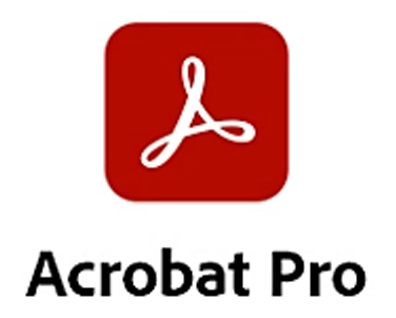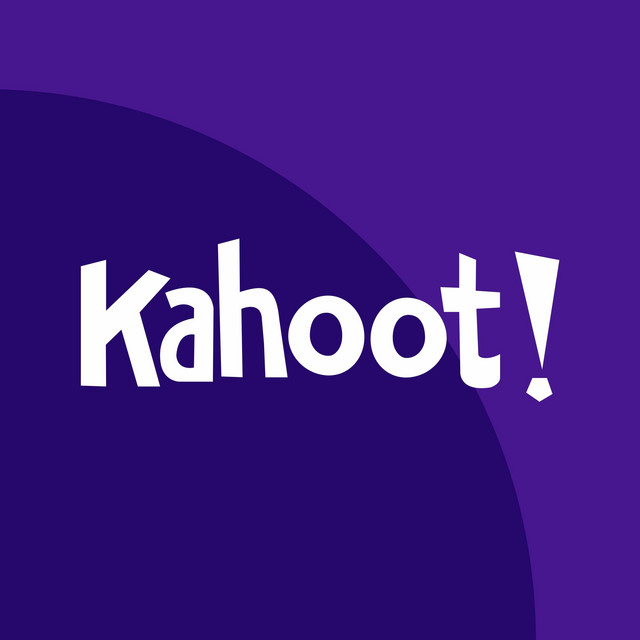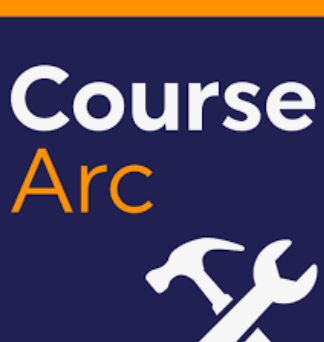Learning Technologies and Services Guide
-
 What Respondus LockDown Browser Does
What Respondus LockDown Browser DoesLockDown Browser is a proctory solution to prevent cheating during online exams. LockDown Browser is a custom Internet browser that "locks down" the testing environment, preventing students from accessing other browser windows. For more information, visit the Respondus website.
How Instructors Use This
- Prevents cheating during online exams, students are unable to copy, print, or access online calculators.
- Prevents access to other applications including messaging, screen-sharing, virtual machines, and network monitoring applications.
- Respondus LockDown Browser now integrates seamlessly with Zoom in Canvas
Tutorials for Faculty and/or Students
- Review these training resources on using Respondus LockDown Browser.
- Review this support article on how to enable Respondus LockDown Browser with Zoom (recommended class size 20-25)
-
 What Respondus Monitor Does
What Respondus Monitor DoesRespondus Monitor is a companion application to LockDown Browser that uses webcam to prevent cheating during online exams. Respondus Monitor records student exams sessions and suspicious behavior is automatically flagged. For more information, visit the Respondus Monitor website.
How Instructors Use This
- A fully automated solution for online proctoring.
- Records student exam sessions with a webcam and suspicious behavior is automatically flagged.
- Respondus Monitor now integrates seamlessly with Zoom in Canvas.
Tutorials for Faculty and/or Students
- Review these training resources on using Respondus Monitor.
- Review this support article on working from a Chromebook.
- Review this support article on how to enable Respondus LockDown Browser with Zoom (recommended class size 20-25)
-
What Canvas Rubrics Does
Rubrics is an assessment tool comprised of rows and columns. Rows define the criteria to let students know what the expectations are and the columns define levels of performance for each criterion. Allow students access to rubrics before they complete their work to provide transparency into your grading. For more information, visit the Canvas What are Rubrics website.
How Instructors Use This- Create Rubrics for assessing and grading student work
- Align rubrics with assignments that use the Online, On Paper, or No submission submission types.
- Provide rubrics to students before they submit their work.
-
 What Turnitin Does
What Turnitin DoesWith Turnitin you can provide standardized or customized written comments, voice comments, check originality, highlight, and use rubrics you create. Peer Mark feature allows students review each other's work and provide constructive feedback for active learning. Students can use Turnitin on their computer or IPad. For more information, visit the Turnitin website.
How Instructors Use This
- Help your students learn about plagiarism, whether it is accidental or deliberate.
- Check all papers for plagiarism issues.
- Save time by creating reusable comments for problems that occur frequently.
Tutorials for Faculty and/or Students
- Review the Student User Guide.
- Review the Faculty User Guide.
-
What Turnitin Draft Coach Does
Turnitin Draft Coach is an add-on for Google Docs that promotes authentic writing, fixes grammar errors, and improves vocabulary in seconds. It helps students improve their academic writing and research skills by providing instant feedback as they write.
Benefits of Using Draft Coach
Instructors can have students draft their assignments in Turnitin Draft Coach before submitting to easily check for originality, correct grammar, and accurate citations. Draft Coach will save time while grading and ensure that students are learning effective writing skills.
How Draft Coach Works
Turnitin Draft Coach is already integrated with Google Docs as long as you’re signed into your CSUEB email. Just go to Google Docs, click Add-ons, then Turnitin Draft Coach.
-
 What Adobe Acrobat does
What Adobe Acrobat doesYou can use Acrobat to make PDFs meet the common accessibility standards, such as Web Content Accessibility Guidelines (WCAG) 2.0 and PDF/UA (Universal Access, or ISO 14289). For more information, visit the Acrobat website.
How Instructors Use This
- Prepare for accessibility: A predefined action automates many tasks, checks accessibility, and provides instructions for items that require manual fixes. Quickly find and fix problem areas.
- Accessibility check: It verifies whether the document conforms to accessibility standards, such as PDF/UA and WCAG 2.0.
- Accessibility report: It summarizes the findings of the accessibility check. It contains links to tools and documentation that assist in fixing problems.
- Reading options: It includes settings for the available reading options.
- Reading order: You can use the Reading Order tool to examine the structure, reading order, and contents of a PDF.
- Save as accessible text: It allows you to read the saved text file in a word-processing application. It also enables you to emulate the end-user experience of readers who use a braille printer to read the document.
Tutorials for Faculty and/or Students
-
 What Grackle Docs Does
What Grackle Docs Does
Create accessible documents with Google Suite's Grackle Docs guided remediation tool. You don’t have to be an accessibility expert to use this tool. Create an Accessible Alt-Image Tag Library and create Accessible PDFs with ease. It is as easy as 1-2-3! Click - Open a Google Doc and run the Grackle Docs add-on. Review - Grackle Docs shows you what is’t accessible in organized groups. Fix - Grackle Docs explains and helps resolve each snag with an assistive technology. For more information, visit the Grackle Docs website.
How Instructors Use This
- Learn about accessibility standards as documents evolve.
- Create Accessible Alt-Image Tag Library - Add descriptive text to an image, Grackle stores it. If the image is used again, Grackle automatically adds it.
- Create Accessible PDFs with Ease - Create accessible PDF for Section 508 compliance. Need to share with other Doc users? One click and Accessibility goes with it.
Tutorials for Faculty and/or Students
- Using Grackle Docs to Improve Accessibility
- Review this support article on how to get Grackle Docs add-on.
-
 EASY: Order your textbooks by the deadline. Submit materials to the Bookstore by the posted deadline.
EASY: Order your textbooks by the deadline. Submit materials to the Bookstore by the posted deadline.
EASY: Use clean, simple design with clear contrast when creating materials. Avoid watermarks and extra graphics and decorations.
EASY: Use styles with Word and templates with PowerPoint.
EASY: Look for electronic versions of book chapters and papers instead of scanning them.
NOT HARD: Use detailed alt-text for pictures and graphics. If you put in a non-decorative picture or graphic, right click on the picture, hit “format,” and then go to “alt text.” Type a detailed description of the image with 125 characters or less into the alt-text box. A screen reader will be able to read the description.
HARDER: Scan PDFs with OCR scanners, then use Adobe Acrobat to check the reading order.
HARDER: Provide transcripts for all audio.
HARDER: Caption all videos. Contact the Canvas design team to learn about CSUEB’s captioning services.
WAY, WAY EASY: For help, contact the Office of the Online Campus
NOT HARD:
* CSUEB Accessibility Initiative: All instructional materials and instructional activities must be accessible to users with disabilities.
For more information, visit CSUEB Accessibility website.
-
 What Camtasia Does
What Camtasia DoesCamtasia allows you to create powerful professional video lessons, lectures, and presentations. You can easily record screen movements and actions, or import HD video from a camera or another source. You can use almost any device with a Mac or Windows platform to customize and edit content. For more information, visit the Camtasia website.
How Instructors Use This
- Assess learning on the spot by adding quizzes and comprehension questions to the video lessons.
- Tailor instruction for different level of learners.
- Easily create closed captions for videos.
Tutorials for Faculty and/or Students
- Review these quick Camtasia Tutorials
-
 What GoReact Does
What GoReact DoesReady to provide next-level student feedback on their videos? Then use GoReact! Leave live or asynchronous, time-stamped feedback to see improvement student learning outcomes. GoReact assignments are prefect for presentations, record using the built-in feature or upload an existing video. GoReact is perfect for departments like Teacher Prep, Sign Language, Communication, and Nursing! For more information, visit the GoReact website.
How Instructors Use This
- Teacher Prep - From early benchmarking to student teaching in the field, you can capture video of students for feedback, grading, and critique of their skills.
- Sign Language - Immersive teaching and interpreter training.
- Communication - Public speaking, debate, sales, and interviews.
- Nursing and Clinical Training - Healthcare programs use GoReact for skills assessment and clinical training like EMT training, first aid, and psychological counseling.
Tutorials for Faculty and/or Students
- Review this support article on the different GoReact assignments types.
- Review this support article on how to use GoReact in your Classic or Ultra course.
- Review this support article on how Students submit assignments on GoReact.
-
 What Panopto Does
What Panopto DoesWith Panopto, you have an easy-to-use, all-in-one video platform for video management. Panopto seamlessly integrates with Canvas. Assess learning on the spot by adding quizzes to the video lessons. Easily create closed captions for videos. For more information, visit the Panopto website.
How Instructors Use This
- Video platform making it easy to record and share videos for active learning into your courses.
- Assess student learning with on the spot quizzes with gradebook integration.
- Zoom recorded meetings are now uploaded directly to Panopto.
Tutorials for Faculty and/or Students
- Review this support article on how to use Panopto in your course.
- Watch this quick video in how to record lectures with Panopto.
- Review this support article on how to add a quiz to your Panopto lecture.
- Review this support article on how turn on auto captions in Panopto.
-
 What Snagit Does
What Snagit DoesSnagit lets you capture images and video in just a few simple clicks. Customize your content with the greatest of ease. Take the hassle out of creating images and videos. Capture your screen, edit images, and deliver results. For more information, visit the Snagit website.
How Instructors Use This
- Grade assignments and narrate feedback by using mark up features, such as drawing tools, stamps, and callouts.
- Build engaging handouts by creating visual course materials with screenshot of documents, notes or drawings.
- Quickly edit or annotate an image.
- Make short “disposable” videos with a short shelf life.
Tutorials for Faculty and/or Students
- Review these Snagit Tutorials.
-

What Adobe Creative Cloud Does
Adobe Creative Cloud is great for designing engaging presentations, videos, web pages, infographics and more! Communicate your ideas with impact. Creative Cloud makes research standout by creating compelling content in seconds. For more information, visit the Adobe Creative Cloud website.
How Instructors Use This
- Create digital learning objects to engage your students more actively, learn more effectively, and gain essential skills for employment.
- Creative Cloud apps address a full range of communication needs and share a common interface.
Tutorials for Faculty and/or Students
- Download for free by sending ITS an email | servicedesk@csueastbay.edu
-
 What Kahoot! Does
What Kahoot! DoesKahoot is a game-based learning platform that allows real-time student response and engagement with distance learning features, play in class, and review game reports to assess learning. Instructors can embed questions in various quiz formats and use Kahoot! to reinforce concepts or preview students’ previous knowledge prior to teaching a particular topic. For more information, visit the Kahoot! website.
How Instructors Use This
- Create game-based quizzes, discussions, and surveys
- Host Kahoot! live in class or via a video conferencing tool
- To review results and run analytics from game reports for formative assessments
Tutorials for Faculty and/or Students
Inclusion and Accessibility Policy & Accessibility Standards
-
 What Edpuzzle Does
What Edpuzzle DoesEdpuzzle is a teaching tool used to place interactive content into pre-existing videos from a variety of sources. For more information, visit the Edpuzzle website.
How Instructors Use This
- Find a video on YouTube, upload your own or re-use a video lesson created by another instructor.
- Edit the video to create your lesson. Record your voice and embedding questions in the video.
- Assign the video to students and check their progress in real time
Tutorials for Faculty and/or Students
- Watch these quick Edpuzzle Tutorials
- Review supporting articles on Edpuzzle Support Center
Edpuzzle Accessibility Policy -
 What Adobe Captivate Does
What Adobe Captivate DoesAdobe Captivate is an authoring tool used for creating eLearning content such as software demonstrations, software simulations, responsive courses, interactive videos, multi-module branched courses, and randomized quizzes. For more information, visit Adobe Captivate.
How Instructors Use This
- Increase student engagement
- Create interaction and collaboration among students.
- Assess student work on various platforms
Tutorials for Faculty and/or Students
- Visit the Learning Hub for an in depth list of tutorials on various topics.
-
 What CourseArc DoesCourseArc allows you to author interactive lessons that foster student collaboration and engagement. You can add videos, quizzes, interactive activities and much more to your content lessons! CourseArc seamlessly integrates with Canvas. For more information, visit the CourseArc website.
What CourseArc DoesCourseArc allows you to author interactive lessons that foster student collaboration and engagement. You can add videos, quizzes, interactive activities and much more to your content lessons! CourseArc seamlessly integrates with Canvas. For more information, visit the CourseArc website.How Instructors Use This
- Create professional and interactive online lesson content.
- Create opportunities to assess student achievement of module and course learning objectives.
- Track student's participation with interactive learning activities.
Tutorials for Faculty and/or Students
- Faculty accounts are limited, please email online@csueastbay.edu, to request an account.
- Review the CourseArc Quick Start Guide.
-

What Piazza Does
Piazza is incredibly easy, completely free discussion board style platform that is intended to help students learn using the power of collaboration. Piazza gives students anonymity options to encourage everyone - even your shy students - to ask and answer questions. For more information, visit the Piazza website.
How Instructors Use This
- Wiki style format enables collaboration in a single space.
- Anonymous posting encourages every student to participate.
Tutorials for Faculty and/or Students
- Review these supports articles on Piazza.
-

What Vyond Does
Vyond is a fast and simple-to-use animation video platform. Create captivating video lectures in minutes with a library of templated scenes and characters or create videos from scratch. Sharing your videos with students is easy as ever. Simply create a MP4 or animated GIFs in a click, making Canvas integration a breeze. For more information, visit the Vyond website.
How Instructors Use This
- Increase student engagement - Create animated video lectures in minutes!
- Blackboard integration made simple - Your videos can be shared anywhere you want with a click!
Tutorials for Faculty and/or Students
- For related support, speak with one of our eLearning Specialist's or Instructional Designer.
- Please connect during regular business hours by email | online@csueastbay.edu | By phone: (510) 885-2700
-
 What Zoom Does
What Zoom DoesZoom is a web conferencing software that is available to all students, faculty and staff at Cal State East Bay. Zoom is an easy to use, reliable video conferencing solution that is integrated inside of each Canvas course. Zoom allows you to share your screen, record meetings and even annotate screens such as website's. It is great for scheduling office hours with students or meetings with up to 500 participants. For more information and CSU East Bay login page, visit csueb.zoom.us
How Instructors Use This
- Virtual office hours to meet with students one-on-one.
- Virtual meeting rooms for group collaboration and work.
- Live polling for Questions and Answers.
- Record and share lectures inside of Blackboard.
Tutorials for Faculty and/or Students
- Review this support article or watch this quick video on how to use Zoom in your course.
- Review this support article or watch this quick video on how to record a Zoom meeting and share in a course.
- Review this support article on how to add an alternative host to Zoom.
- Review this support article on enabling captions in Zoom.
- Review this support article on how students use Zoom.
-
What Copyright Does
Do you teach an online or hybrid course and find it confusing to determine what materials you can distribute and how? CSUEB Library provides comprehensive guides to help you navigate copyright law and how it applies to you. This is guide offers information about copyright for the Cal State East Bay community. It is not intended for legal use.
How Instructors Use This
- For online and hybrid courses, you can feel safe knowing that if you put your materials on your course site, you are meeting many of the requirements for distributing materials within the bounds of copyright law.
- Canvas limits access to enrolled students and only gives students access to materials for a specific period of time.
Tutorials for Faculty and/or Students
-
What F2F vs. Online Engagement Equivalences Does
Whether they are traditional, blended, or fully online courses, many include online components and other types of activities as part of instructional time. Any course that meets must consider Instructional Equivalency Credit Hours while designing its online component. For more information, review the F2F vs. Online Engagement Equivalencies website.
How Instructor's Use This
- In-Class Face-to-Face Seat Time Activities.
- Equivalent Online Engagement Hour Activities.
- Credit Units Information and Carnegie Units.
Tutorials for Faculty and/or Students
- Review the F2F vs. Online Equivalences Chart
-
 What LinkedIn Learning Does
What LinkedIn Learning DoesLinkedIn Learning combines industry-leading content from Lynda.com with personalized course recommendations based on insights from LinkedIn’s network. The playlet feature lets you share and assign online content to support flipped-classroom learning modules. For more information, visit the LinkedIn Learning website.
How Instructors Use This
- Enable flipped classroom learning - assign video tutorials and tools training for homework while reserving class time for discussion and concept mastery.
- Training for every function, at all levels - Select from thousands of beginner-to-advanced courses across core functional areas.
- Hundreds of soft skill courses - Select from topics covering leadership skills, time management, peer relationships, communication and more.
Tutorials for Faculty and/or Students
- Review the Faculty Guide LinkedIn Learn Classic.
- Review the Student Guide LinkedIn Learn Classic.
- Review the Student Guide LinkedIn Learn Ultra.
-
Students can access academic support by visiting the Student Center for Academic Achievement (SCAA), located in the CORE, (343). The SCAA offers a range of services in person and online including subject tutoring, writing tutoring, and academic coaching. For support during evening and weekend hours, students can access NetTutor through the SCAA webpage.